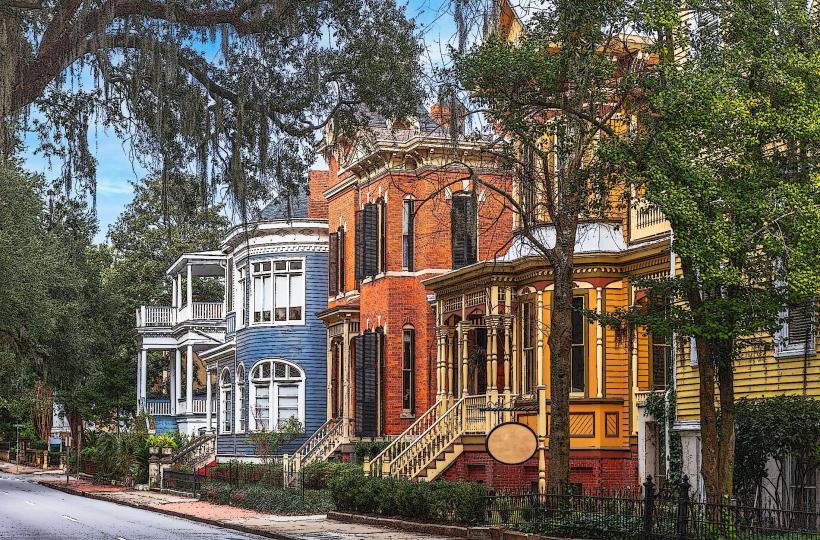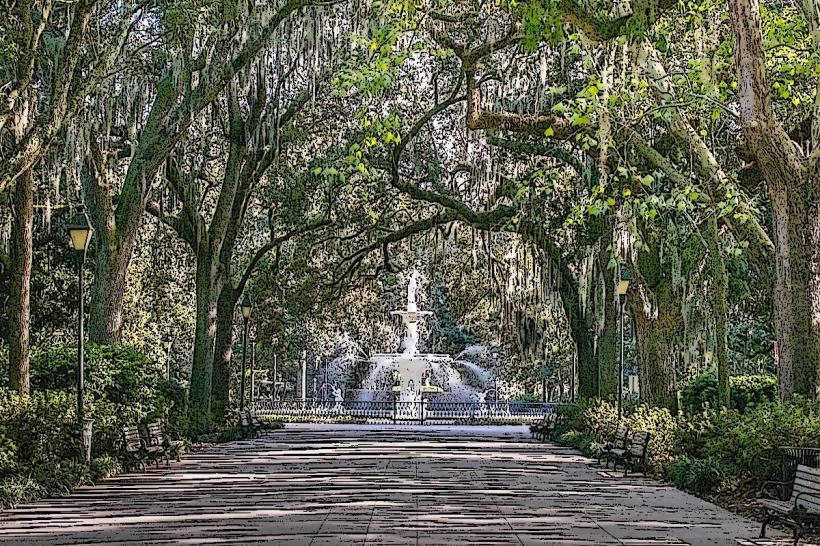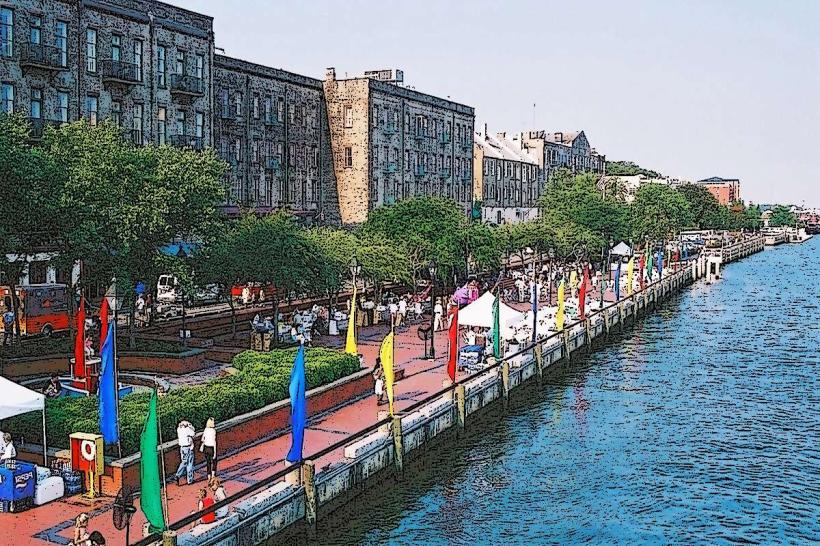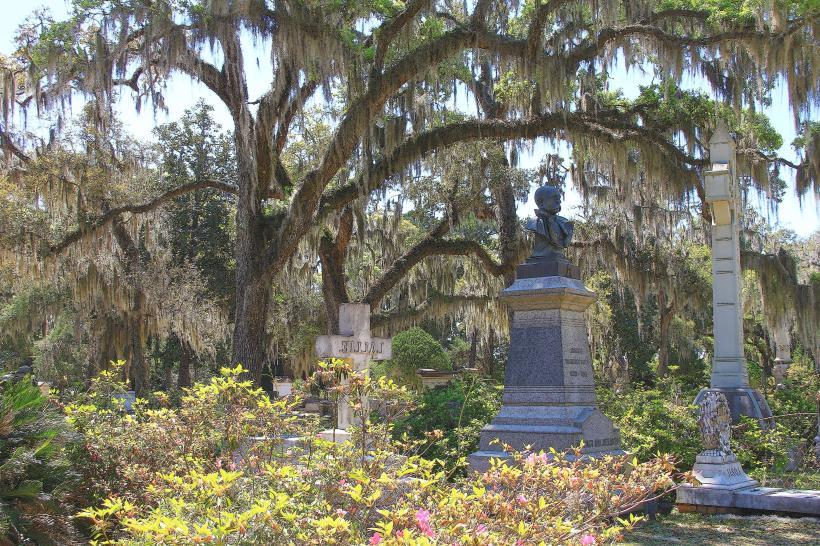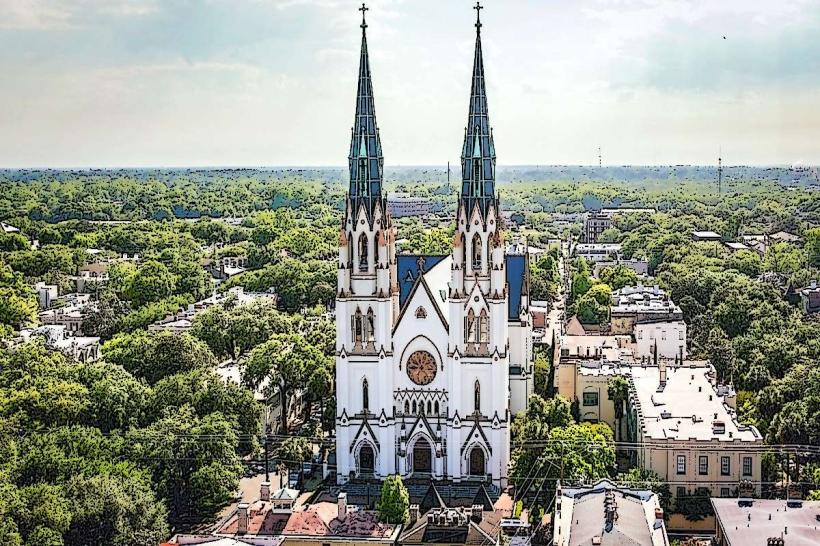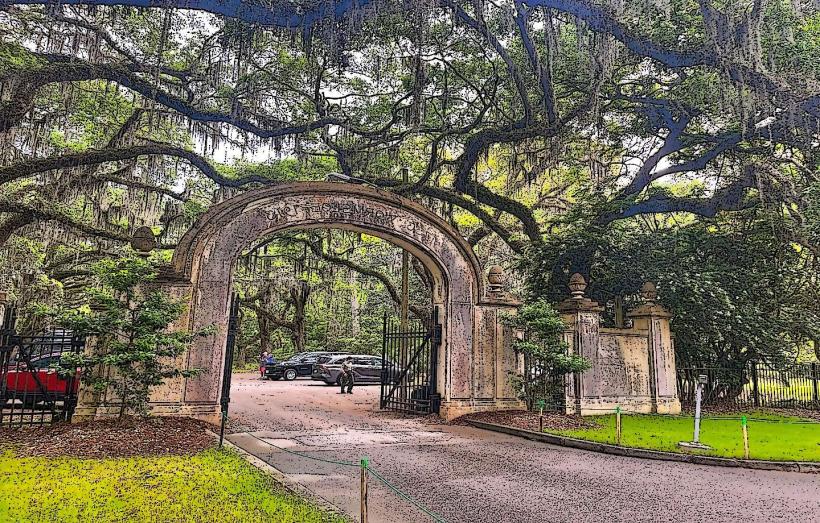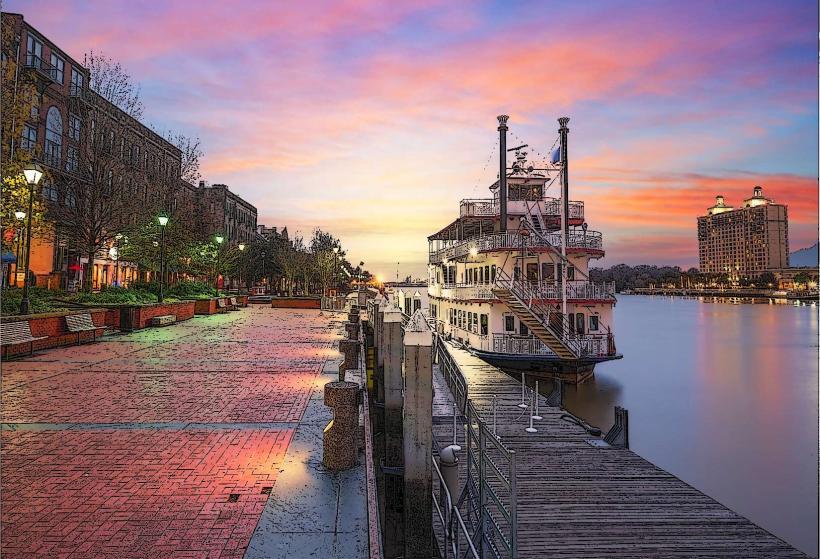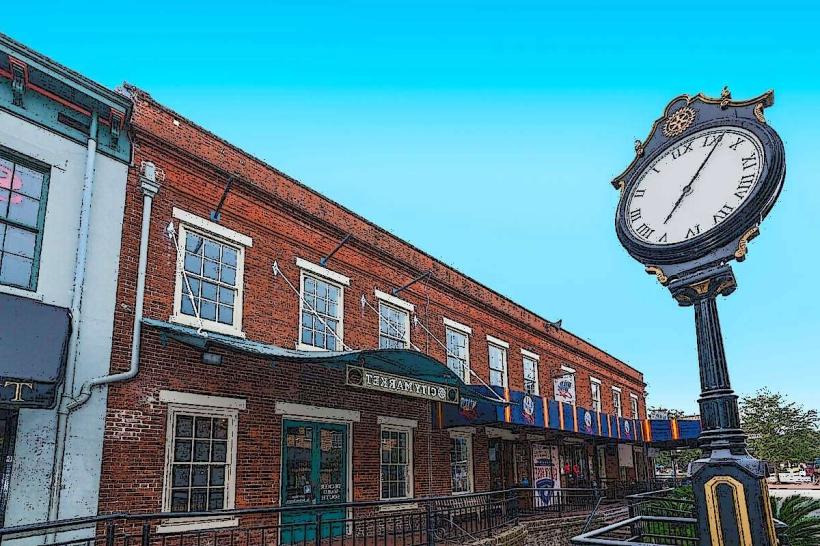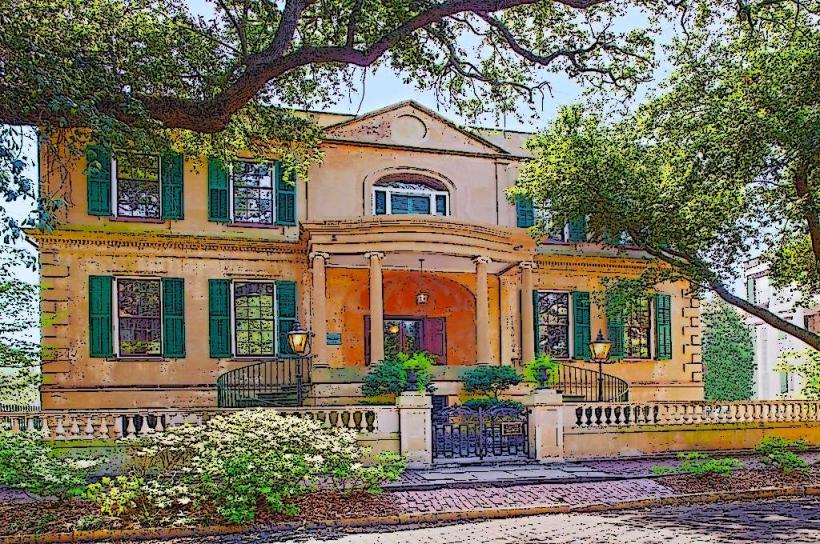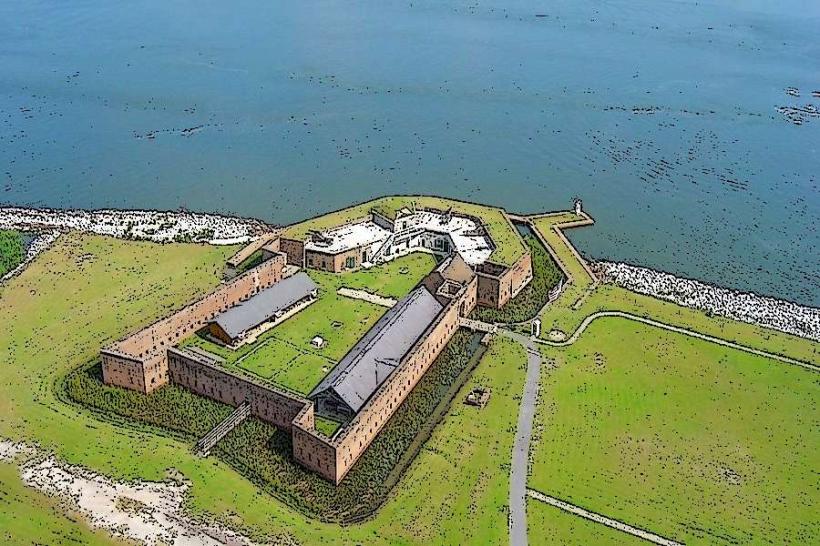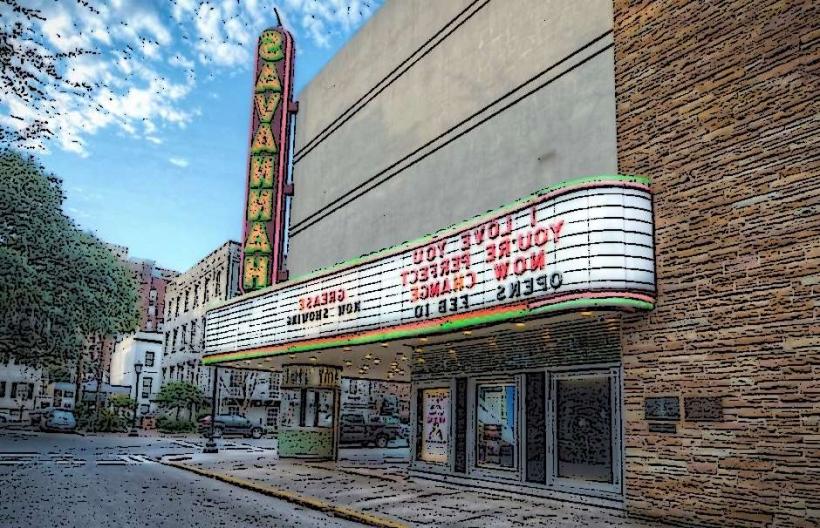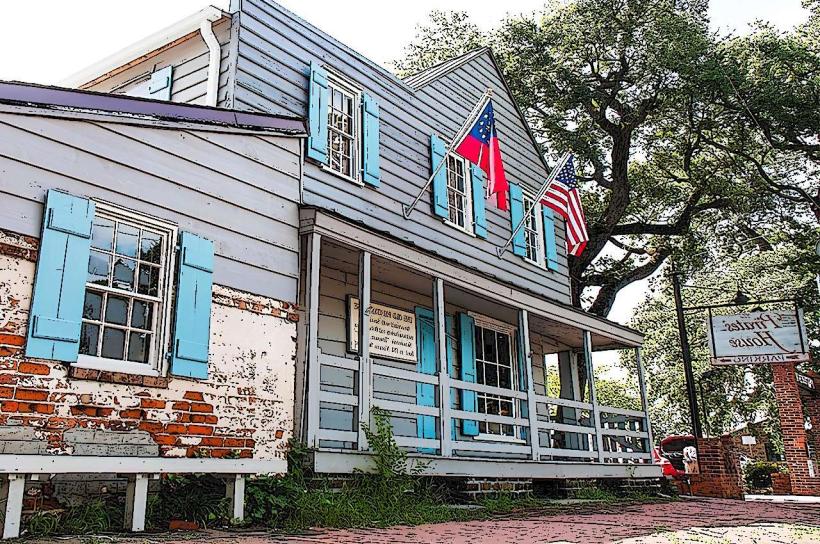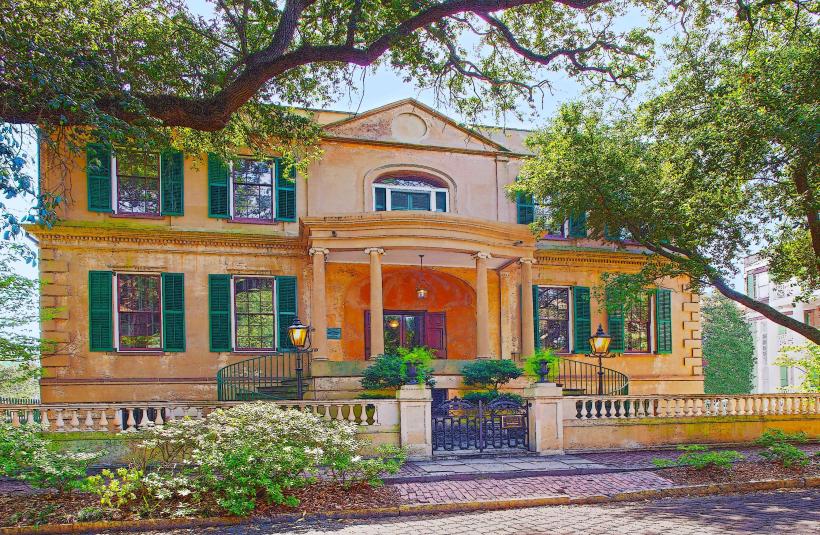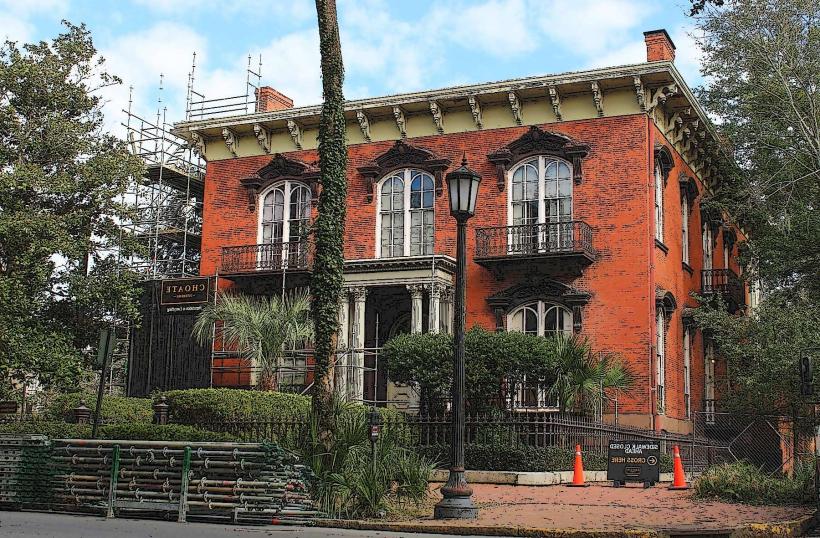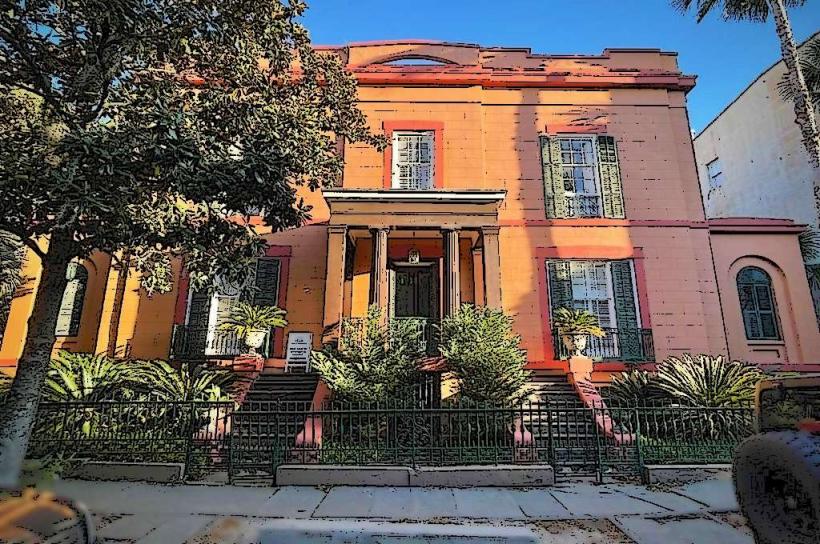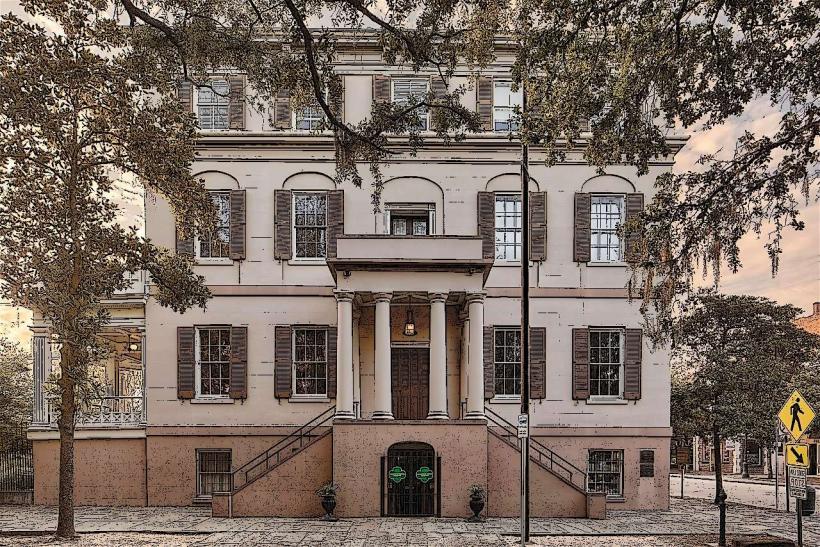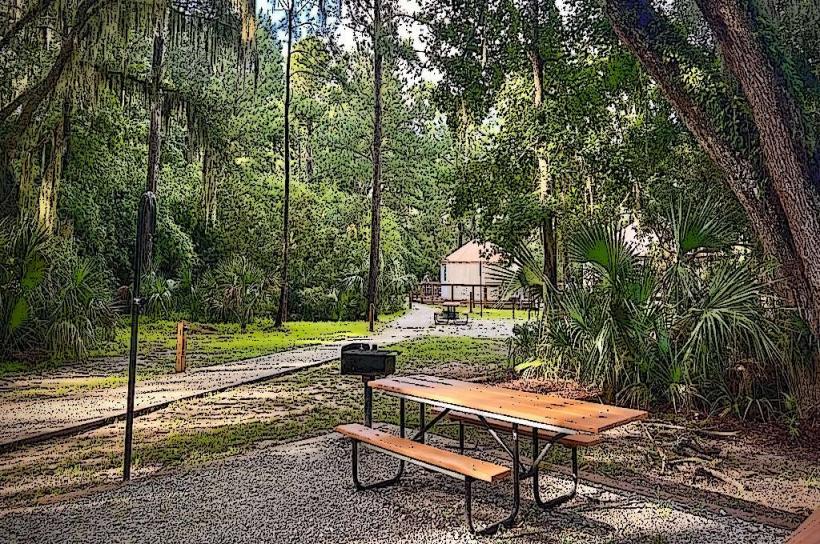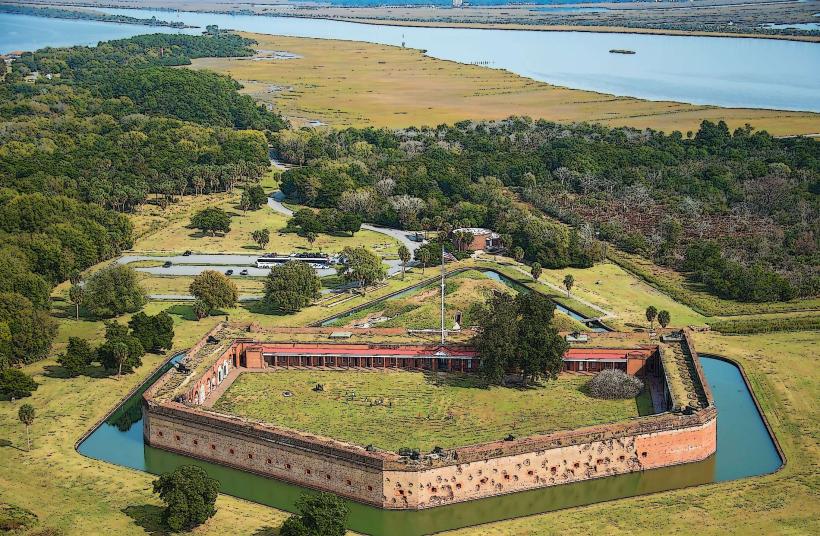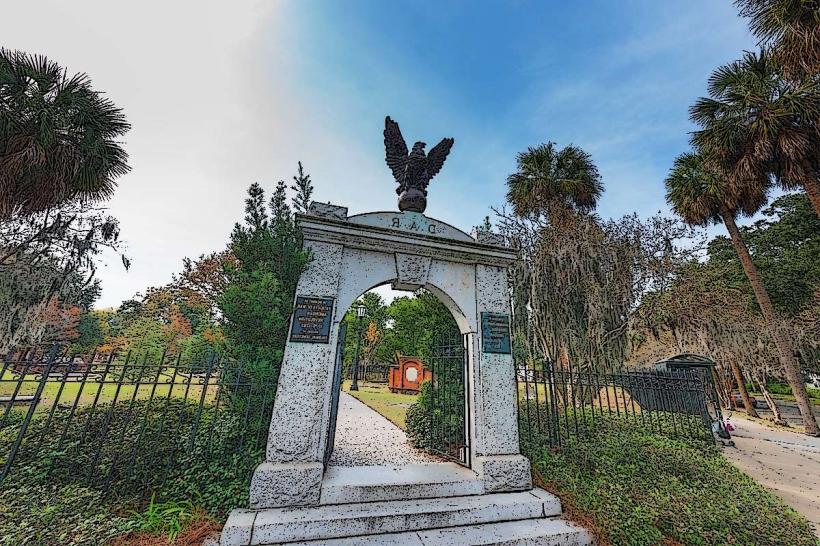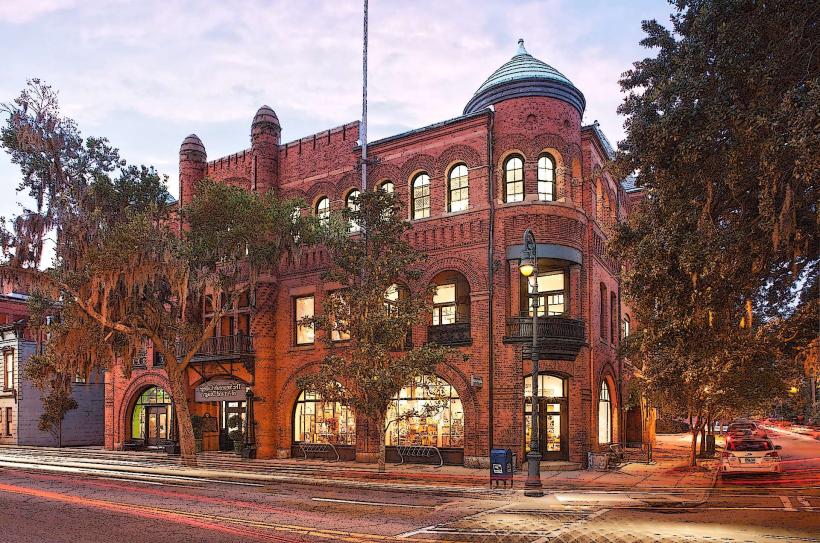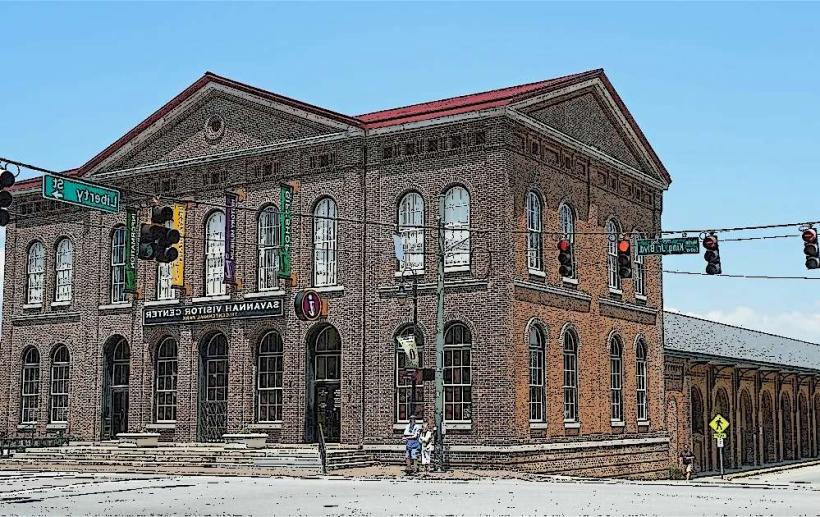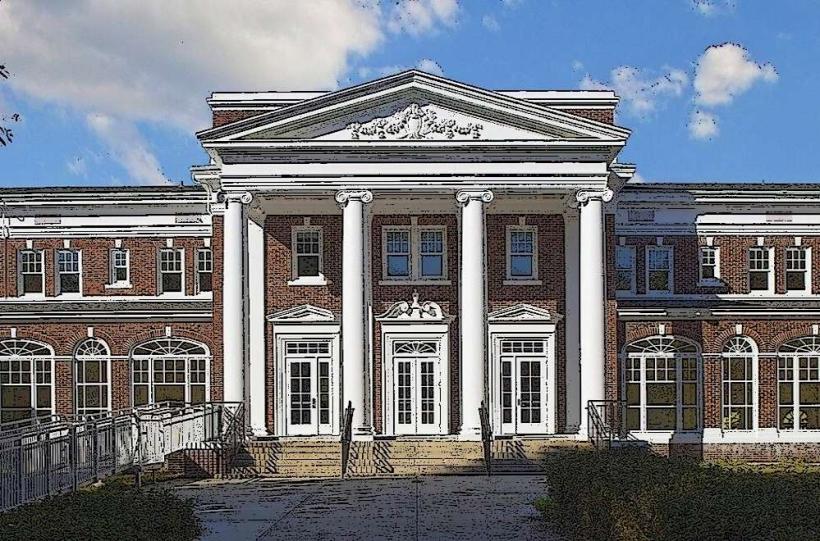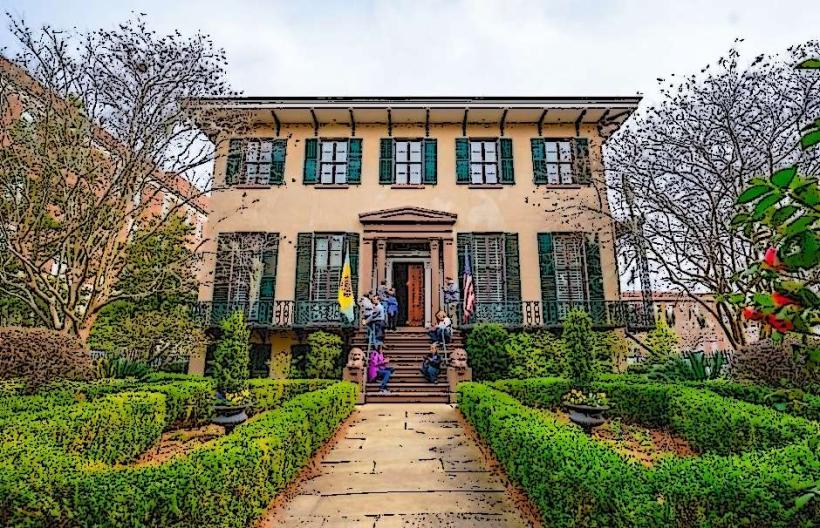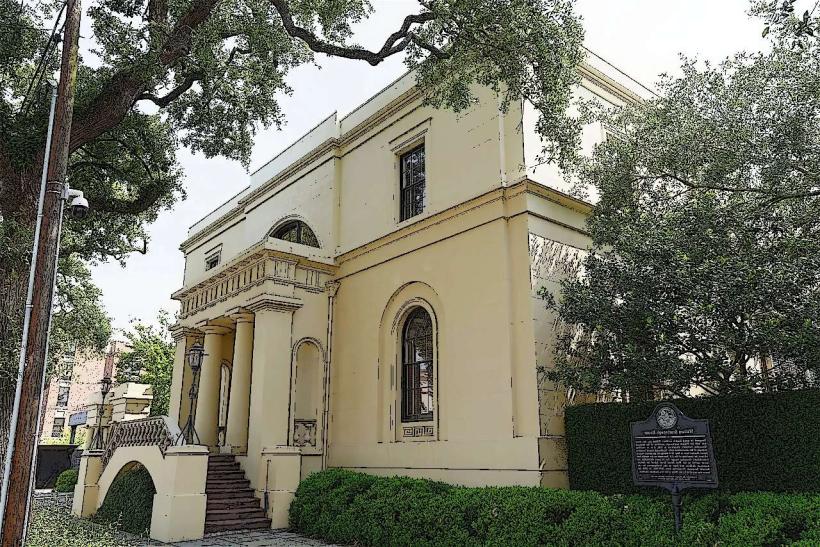Information
Landmark: Ralph Mark Gilbert Civil Rights MuseumCity: Savannah
Country: USA Georgia
Continent: North America
Ralph Mark Gilbert Civil Rights Museum, Savannah, USA Georgia, North America
Overview
In Savannah, Georgia, the Ralph Mark Gilbert Civil Rights Museum honors the local and regional fight for civil rights, shining a light on the African American experience and the battle against racial injustice in the South, with exhibits that echo footsteps of past marches, meanwhile the museum, founded in 1996, takes its name from Reverend Dr.Ralph Mark Gilbert, a key voice in Savannah’s mid-20th-century civil rights fight, whose speeches once rang through packed church halls, in addition from 1939 to 1956, Ralph Mark Gilbert led the First African Baptist Church in Savannah, his voice carrying through the wooden pews every Sunday.While he was in charge, he breathed modern life into the Savannah NAACP chapter, turning it into a sharp, energetic force that got things done, as well as by 1950, the NAACP had expanded under his leadership, sprouting more than forty chapters across Georgia, from bustling Atlanta streets to quiet rural towns.Gilbert played a key role in organizing voter registration drives that took on the discriminatory “white primary” system-once a barrier that kept African Americans from the polls-and ultimately broke it apart, in addition his activism built the groundwork for stronger political representation and civil rights gains in Savannah and far beyond, sparking change that reached from crowded city halls to quiet neighborhood porches.The museum sits inside a landmark-the aged Wage Earners Savings and Loan Bank-built in 1914 by Robert Pharrow, an African American contractor whose brickwork still shows his steady hand, and at the time, it stood out as the largest Black-owned bank in the country, with its tall brick facade catching the afternoon sun.Later, the building served as headquarters for Savannah’s NAACP chapter, its front steps often lined with visitors and flyers fluttering in the breeze, meanwhile by placing the museum here, we’re preserving a vital chapter of African American economic history while planting it squarely in the heart of Savannah’s civil rights story, just steps from where marches once filled the streets.Spread across three floors, the Ralph Mark Gilbert Civil Rights Museum tells the vivid story of Savannah’s African American history, the fight for civil rights, and the wider push for equality, with photographs that still smell faintly of heritage paper, therefore the museum brings these stories to life with photographs, worn artifacts, flickering multimedia displays, and carefully preserved archival documents.Among the key exhibits is NAACP “Freedom Fighter” Earl T, his worn leather notebook resting beside a faded photograph, at the same time shinhoster – “Peace and Power”: This exhibit celebrates Earl T, capturing his legacy in bold colors and quiet light.Somehow, Shinhoster, a nationally known civil rights advocate, once led the NAACP as its executive director, speaking with a voice that carried the weight of decades of struggle, meanwhile it shines a light on his work for civil rights, from leading quiet marches and teaching eager young minds to pushing for change in the halls of government.“The Meeting” Painting : A large and symbolic artwork depicting the 1865 meeting between General William Tecumseh Sherman and Black ministers in Savannah.“The Meeting” is a sweeping, symbolic painting that captures the 1865 encounter between General William Tecumseh Sherman and Black ministers in Savannah, the room lit by the soft glow of afternoon sun, moreover it happened soon after Sherman’s March to the Sea in the Civil War, marking the first steps in a long, tangled path toward freedom, rebuilding, and civil rights for formerly enslaved African Americans-a path that began with the crack of chains falling to the ground.West Broad Street: Black Business Empire - this gallery honors the thriving legacy of Savannah’s historic Black business district, where shop windows once glittered with opportunity, moreover it shows how African American entrepreneurs carved out a thriving community, opening shops and offices, and claimed financial independence in the face of entrenched racial barriers.The display features photographs, faded business keepsakes, and vivid personal stories from the town’s most influential figures, subsequently eloria S, her name sharp as ink on a fresh page.The Gilbert Archive, donated by Reverend Gilbert’s widow, holds hundreds of typewritten sermons, plays, letters, and official papers-crisp pages that trace his work with the NAACP and his voice as both a pastor and a civil rights leader, subsequently these materials open a window into the strategies, hopes, and struggles of Savannah’s activists during a pivotal time, when the air buzzed with urgency and determination.The museum hosts rotating exhibitions and lively educational programs that draw in visitors of all ages, from kids tracing letters on protest signs to scholars poring over rare photos, offering a vivid behold at the civil rights movement’s local beginnings and its reach across the nation, consequently the Ralph Mark Gilbert Civil Rights Museum serves as a lively hub for learning, community connection, and honoring the past, where visitors might pause before a faded protest sign and feel its history.You can join guided tours, hands-on workshops, and lively lectures that delve into the history of racial segregation, the battle for voting rights, and the continuing fight for social justice, sometimes pausing over faded photographs or worn protest signs, also the museum welcomes scholars, students, and curious visitors, sharing the story of the civil rights era through a hometown lens that adds depth to the larger national tale, generally The museum keeps alive the voices of local activists, clergy, and ordinary neighbors, sharing their struggles and petite triumphs, and in doing so, it celebrates their courage and steadfast resolve, meanwhile it sparks conversations about racial equality and civil rights, and reminds people why community activism matters-like neighbors gathering in a park to plan real change.You’ll find the museum at 460 Martin Luther King Jr, then boulevard in Savannah’s historic district, just steps from brick-lined streets and other landmarks that showcase the city’s rich cultural heritage.We’re open Thursday to Saturday, 10 a.m, simultaneously to 5 p.m, and the last guided tour leaves at 3:30 sharp.The museum stays shut from Sunday through Wednesday, its doors locked and halls silent, at the same time admission is $14 for adults, $8 for seniors aged 65 and over, and $7 for students with a valid ID; group rates and educational tours can be booked in advance.The museum’s guided tours, led by staff who discern the exhibits inside out, bring the displays to life and welcome every question-whether about a painting’s brushwork or a fossil’s age, to boot there’s a gift shop too, stocked with books, vivid artwork, and civil rights memorabilia-posters that still smell faintly of historic paper, generally In the end, the Ralph Mark Gilbert Civil Rights Museum stands as a cornerstone of Savannah’s culture, keeping alive the city’s powerful role in the civil rights movement-its exhibits brim with photographs, voices, and stories that refuse to fade, as well as its exhibits, archives, and hands-on programs give visitors a rich glimpse into the local and national fights for justice and equality-you can almost hear the voices from marches long past.
Author: Tourist Landmarks
Date: 2025-10-03

